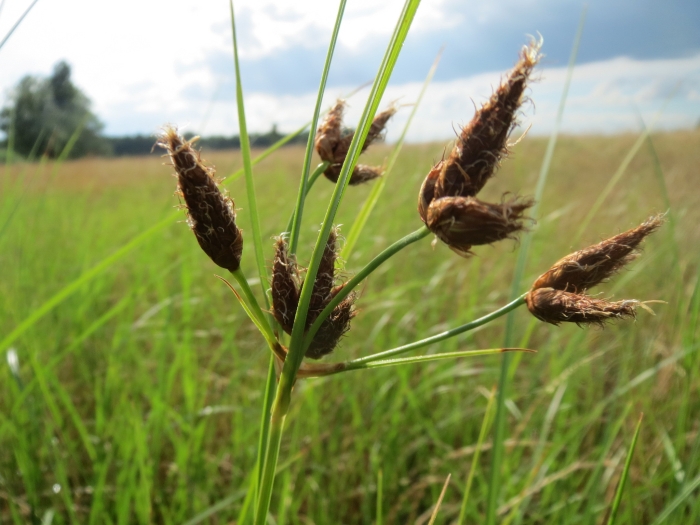Sea Clubrush
(Bolboschoenus maritimus)
Sea Clubrush (Bolboschoenus maritimus)
/
/

© Andreas Rockstein
CC BY-SA 4.0






































Estimated Native Range
Summary
Sea Clubrush is valued for its ability to stabilize soil and is often used in wetland restoration and erosion control projects. It is also suitable for water gardens and naturalized areas where it can be allowed to spread. This plant thrives in wet conditions and can even tolerate periodic flooding, making it ideal for riparian plantings. It requires full sun to part shade and prefers soils with slow to medium drainage. While generally low maintenance, it can become invasive in some conditions, spreading by rhizomes to form large colonies. Gardeners should be cautious when planting it near natural water bodies to prevent unwanted spread.CC BY-SA 4.0
Plant Description
- Plant Type: Grass
- Height: 2-2.5 feet
- Width: 2-3 feet
- Growth Rate: Moderate
- Flower Color: N/A
- Flowering Season: Summer
- Leaf Retention: Evergreen
Growth Requirements
- Sun: Full Sun
- Water: Medium, High
- Drainage: Medium, Slow
Common Uses
Erosion Control, Low Maintenance, Water Garden
Natural Habitat
Coastal marshes, estuaries, and the margins of saline and brackish waters
Other Names
Common Names: Cosmopolitan Bulrush , Prarie Bulrush , Alkali Bulrush , Saltmarsh Tuber Bulrush , Saltmarsh Club-Rush , Bayonet Grass , Purua-Grass , Ysbigfrwynen Y Morfa , Strandsimse , Gewöhnliche Strandsimse
Scientific Names: Bolboschoenus maritimus , Scirpus maritimus , Schoenoplectus maritimus , Bolboschoenus maritimus var. maritimus , Bulboschoenus maritima , Scirpus maritimus var. genuinus , Scirpus maritimus var. monostachyus , Scirpus pacificus , Cyperus maritimus , Reigera maritima , Scirpus brittonius
GBIF Accepted Name: Bolboschoenus maritimus (L.) Palla